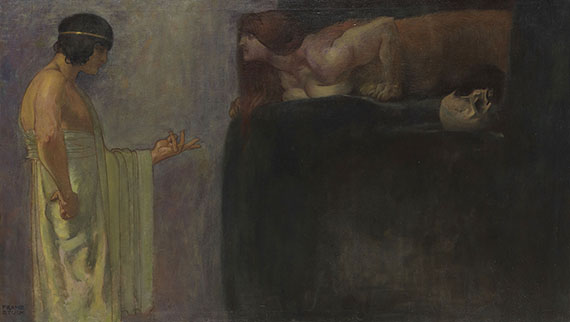Dictionary


Group of Seven
The Group of Seven was a Canadian artists’ group, which took its name from its first exhibition in Toronto in 1920. The group included the seven painters Frank Carmichael, Lawren S. Harris, A. Y. Jackson, Frank (Franz) Johnston, Arthur Lismer, J. E. H. MacDonald and Fred Varley. A. J. Casson joined the group after Frank Johnston left in 1926. Additional members followed, including Edwin H. Holgate in 1930, and Lionel LeMoine FitzGerald in 1932. The Group of Seven existed until 1933. The group executed landscape paintings, a focus they had developed a decade prior to their first exhibition in 1920. The group’s core was formed in c. 1910, and included other artists such as Tom Thomson. The artist, unhappy with Canada’s conservative painting tradition, strove towards creating a progressive and independent national art, by focusing on the domestic landscape, which had previously been sidelined as a subject. The group was influenced by Post-Impressionism and Symbolism, and the artists used a bold palate to represent radically simplified forms, which initially shocked the public. The Group of Seven’s paintings are regarded the highpoint of Canadian art history.
The Group of Seven was a Canadian artists’ group, which took its name from its first exhibition in Toronto in 1920. The group included the seven painters Frank Carmichael, Lawren S. Harris, A. Y. Jackson, Frank (Franz) Johnston, Arthur Lismer, J. E. H. MacDonald and Fred Varley. A. J. Casson joined the group after Frank Johnston left in 1926. Additional members followed, including Edwin H. Holgate in 1930, and Lionel LeMoine FitzGerald in 1932. The Group of Seven existed until 1933. The group executed landscape paintings, a focus they had developed a decade prior to their first exhibition in 1920. The group’s core was formed in c. 1910, and included other artists such as Tom Thomson. The artist, unhappy with Canada’s conservative painting tradition, strove towards creating a progressive and independent national art, by focusing on the domestic landscape, which had previously been sidelined as a subject. The group was influenced by Post-Impressionism and Symbolism, and the artists used a bold palate to represent radically simplified forms, which initially shocked the public. The Group of Seven’s paintings are regarded the highpoint of Canadian art history.
Offers




